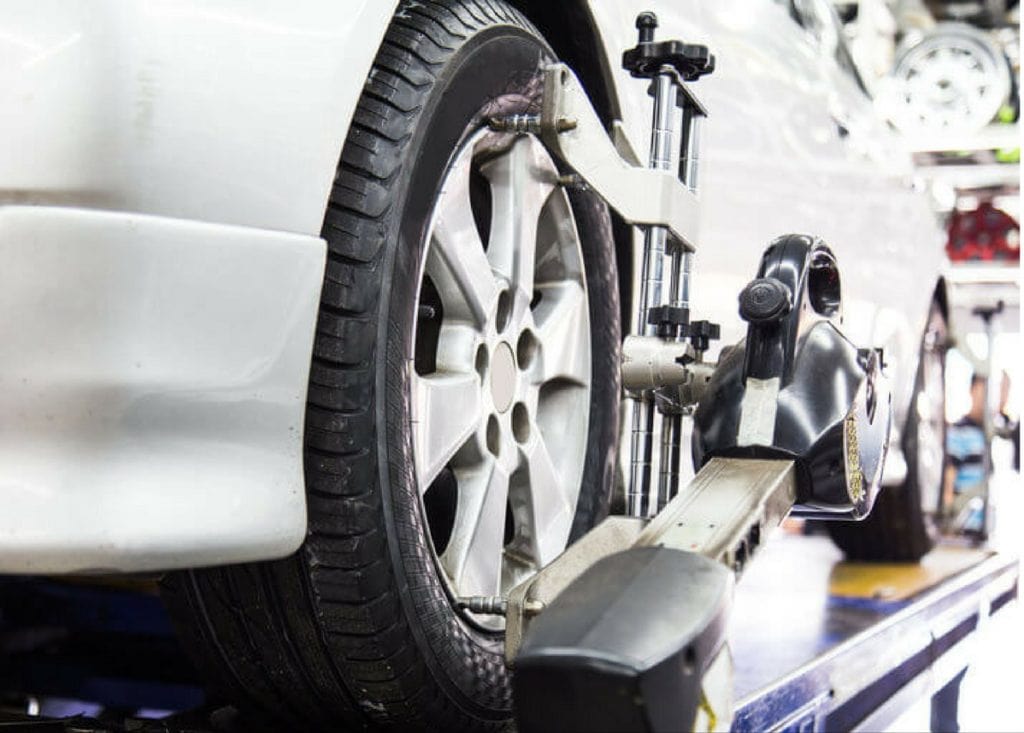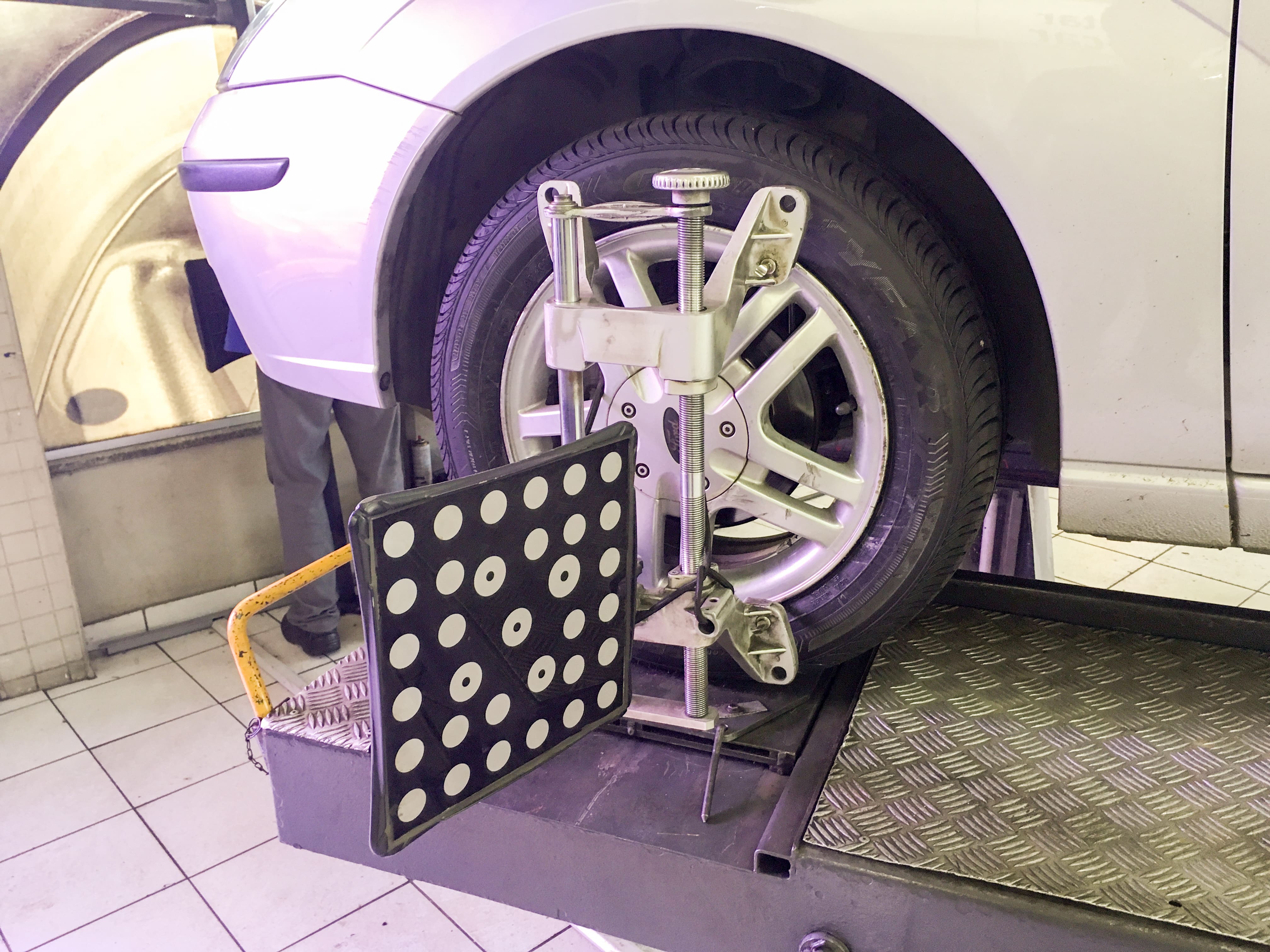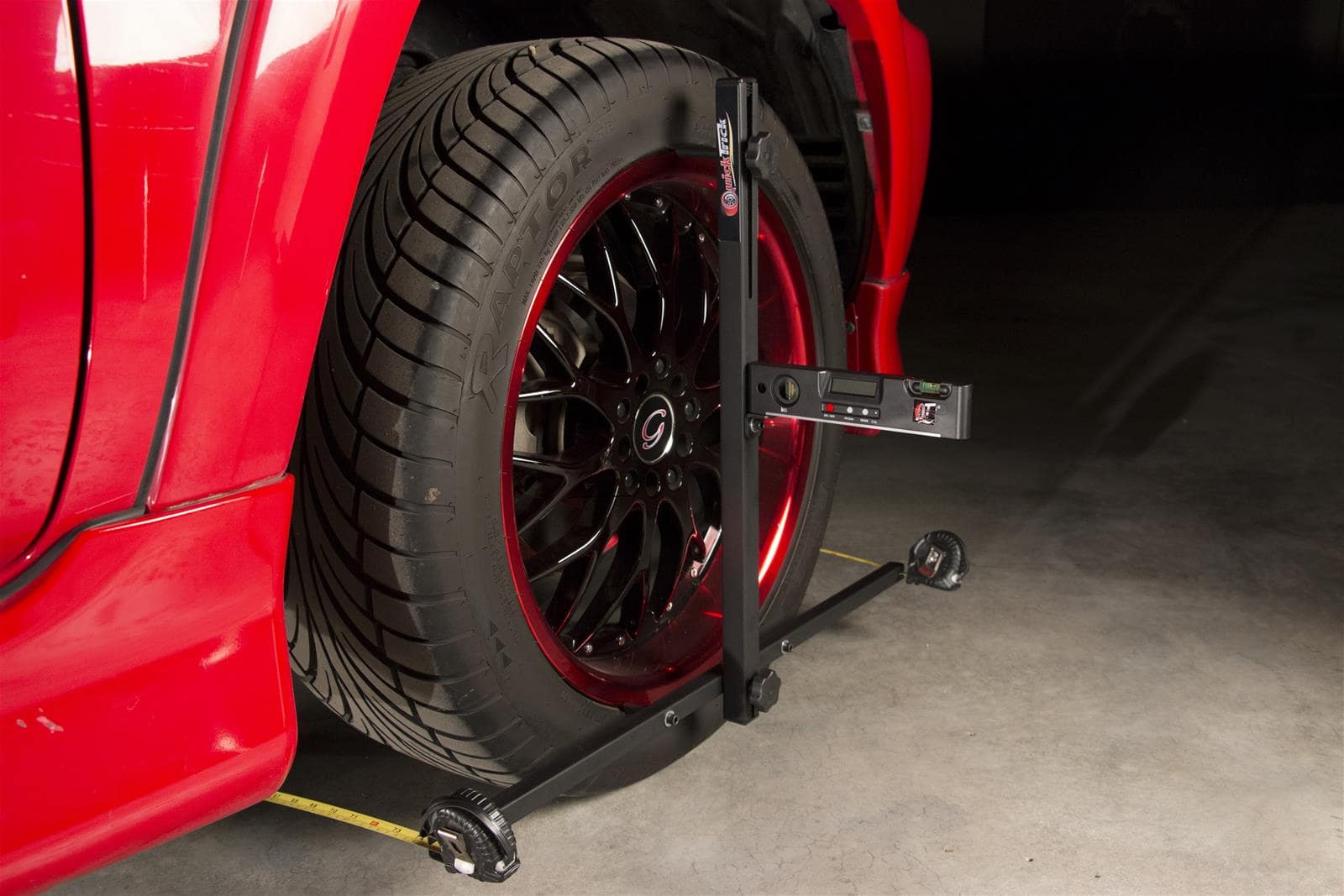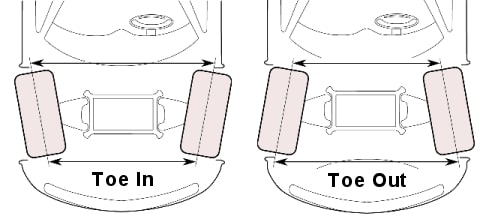
The basic knowledge of wheel alignment states to adjust the angles of the wheels so that they can be parallel to each other and perpendicular to the ground. However, wheel alignment is more than the basic details. There are many important situations where you need to check wheel alignment like at the time of installing new suspensions, new tyre’s installation or when you notice unusual tyre wear.
WHEEL ALIGNMENT REQUIREMENT & SUSPENSION
In short, wheel alignment is the basic requirement for adjusting different suspension components and measuring complex suspension angles. In fact, modifying the suspensions greatly affects the handling capacity and uneven tyre wear.
Hence, to prevent excessive tyre wear, steering or tracking problems, make sure the factors affecting the alignment are checked properly. Here are the three main factors that can affect your vehicle’s wheel alignment.
- Camber

Camber is one of the important angles of the wheel, measured in degrees and identified from the front-end view of your vehicle. There are three types of camber angles – positive, negative and zero.
If you find the top section of the wheel leaning out of the car, then the camber is said to be positive and if your vehicle’s wheel is leaning inward, then the camber is negative.
Moreover, if the wheel camber is disordered, re-fix it immediately for preventing premature tyre wear because it constantly damages your vehicle’s tyre tread. In fact, camber disorder can create many steering issues as improper alignment can pull the tyres on the side with the most positive camber.
Yet, after a thorough check on all the possibilities, if you find that the camber is not adjustable on the front-wheel-drive of your vehicle, then you might need to replace or repair your vehicle’s wheel.
- Caster

Your vehicle’s front wheels respond when the pivot attached to the suspension system is operated. Caster is the angle of this steering pivot, which is viewed from the sides and measured in degrees.
Similar to camber, there are two types of caster angles – positive and negative. If the top of the pivot is tilting towards the front of your vehicle, then the caster is negative and if it is tilting towards the rear, it is positive.
If your vehicle’s caster is out of alignment, it can damage the straight-line tracking and if it is different on both the sides, the vehicle will pull to the side with a negative caster. In fact, in certain cases, the caster is equal on both the sides but is too positive, which makes the steering heavy and jerks at the slightest bump. However, if the caster is too negative, it will affect the steering wheel and can off-line your vehicle.
- Toe-In

Perhaps the simplest concept to identify an improper wheel alignment is by a toe angle. Toe represents the angle derived from the position of the tyres from the vehicle’s top view.
In fact, correct toe angle is important for increasing tyre’s life and even tread wear. Many times a tyre’s tread life can be sacrificed due to unbalanced toe angle. If the front of both the tyres begins to face each other, then it is a positive toe, whereas, if both the front tyres are facing opposite, it is a negative toe.
With the benefit of straight driving, positive toe angle has some negative impacts such as allowing the wheels to generate constant force against each other and affecting the turning ability of your vehicle. Moreover, a positive toe straightens out the wheels at speed and prevents uneven tyre wear.
On the other side, if you find a negative toe in your vehicle then the suspension arms shall be inward that will compensate for the crawling and level out the wheels at certain speed. In fact, with a slight change in the direction, it will cause the car to tilt towards one side and can even off-line vehicle’s stability.
- Final words
If your vehicle’s wheel alignment is not as per wheel’s manufacturing norms, then it might be hazardous to drive your vehicle on public roads. Hence, it is important to check your vehicle’s wheel alignment immediately for driving safely. And if you want a professional to check your vehicle’s wheel alignment in Sydney, Eagle Tyres is just a call away! Call us on 02 9637 4355 to get a wheel alignment service today. In addition, you can get your vehicle’s tyres inspected free of charge at Eagle Tyres.





